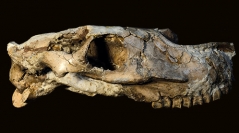

 Geodiversitas
39 (2) - Pages 285-314
Geodiversitas
39 (2) - Pages 285-314The Early Pliocene locality of Çalta, Turkey (Ruscinian Age, c. 4.0 Ma) has two species of advanced hipparionine horses that we refer to Plesiohipparion cf. longipes (Gromova, 1952) and Proboscidipparion heintzi (Eisenmann & Sondaar, 1998). Our study follows an extensive treatment of the entire mammalian fauna in 1998 and in particular an important and comprehensive work on the hipparions by Eisenmann & Sondaar in 1998. We undertake herein a morphologic and metric analysis of skulls, mandibles, dentitions and postcranial elements to segregate all elements into these two taxa. Our analysis follows and concurs with Eisenmann & Sondaar’s work except for the generic attributions here which are original. Beyond the basic empirical work here, we strike comparisons to other Old World hipparion lineages and find that these two hipparion taxa compare closely, at the genus level, to Asian Plesiohipparion Qiu, Huang & Guo, 1987 and Proboscidipparion Sefve, 1927. Our comparisons further elucidate that Plesiohipparion had undertaken a range extension into Anatolia by 7.1 Ma where it is present at the locality of Akkașdağı. Our work suggests that Proboscidipparion extended its range from China into Anatolia in the Early Pliocene. Reevaluation of the entire Çalta mammalian fauna suggests that Anatolia was a dynamic biogeographic region in the Early Pliocene including endemic forms, Late Miocene Eurasian holdovers and Asian and African immigrant taxa. Turkey was in fact a Eurasian cross-roads region of active intercontinental mammalian migrations in the Early Pliocene.
Equidae, hipparionines, Pliocene, paleobiogeography, Çalta, Turkey.